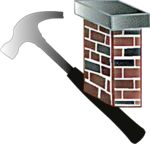System Error Codes are defined errors and error messages that are utilized by programmers when their software has an issue. They can be displayed by computers to users in response to software problems, hardware issues, or even certain types of user input. System error codes are usually displayed as an acronym, with a description of the error and the suggestion of what to do next.
These errors can be seen on the internet when a website isn’t accessible, or if there is an internal server issue or data base issue. On a local machine it could be as simple as « file too long » which can be resolved by changing the name of the file or more complicated, such as « no disk space left. » In this situation, you may need to shut down http://www.pcerrorsfixer.com/what-flexible-solutions-data-room-providers-can-offer certain applications (to remove swap files) or delete data, or purchase an additional hard disk.
Other system errors could be as severe as « fatal error, » in which a program has decided to stop or stop, but they can also be as mild as a signal that something isn’t quite right. The header file errno includes errors for almost every possible error in the GNU/Hurd operating system.
These errors can range from the simple « text file busy » when an operation is trying modify a read only file, to the more complex « broken pipeline. » These types of errors could also mean that the process trying to perform on the resource was disrupted by a signal from SIGPIPE and has not been addressed.




